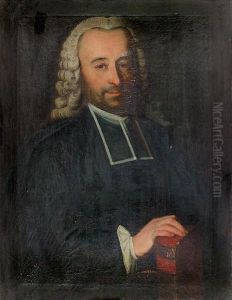Sigmund Barth Paintings
Sigmund Barth, a name less familiar in the broad panorama of art history, was an artist whose contributions, though not widely recognized in mainstream art circles, offer a unique perspective on the artistic movements of the early to mid-20th century. Born in 1888, Barth's life and career spanned a tumultuous period in history, marked by two world wars, the Great Depression, and significant shifts in artistic styles and expressions. Despite the lack of extensive documentation on Barth's life, available records suggest that he was an active participant in the evolving art scenes of Europe and possibly America, engaging with various movements without firmly anchoring himself in any single style.
Barth's artistic journey reflects the eclectic and often experimental nature of early 20th-century art. While specific details of his education and early influences are scarce, it is evident from his surviving works that he was adept in both traditional and avant-garde techniques. His portfolio, though not extensive, showcases a versatility ranging from figurative works to abstract compositions, suggesting an exploration of Expressionism, Cubism, and perhaps even early Surrealism. This versatility points to a deeply curious mind, one that was keenly attuned to the rapid changes in the art world and society at large.
Throughout his career, Barth remained somewhat of an enigma, never fully aligning with any one art movement. This independence is a double-edged sword; on one hand, it allowed him a creative freedom not afforded to his contemporaries who were tightly bound to specific schools of thought. On the other, it has made it difficult for art historians to categorize his work and, by extension, to grant him a well-defined place in art history. His contributions, therefore, are often celebrated in more specialized or niche circles, appreciated by those who seek to understand the nuanced undercurrents of 20th-century art.
Barth's later years and his death in 1968 mark the end of a complex journey through a rapidly changing art world. The scarcity of comprehensive records about his life and work has posed challenges to art historians. Nevertheless, his artistic legacy, as preserved in the works that survive him, offers a fascinating glimpse into the mind of an artist who was both a product of his time and a man ahead of it. Barth's story is a reminder of the countless artists whose contributions remain on the fringes of the mainstream art narrative, awaiting rediscovery and reevaluation by future generations.













